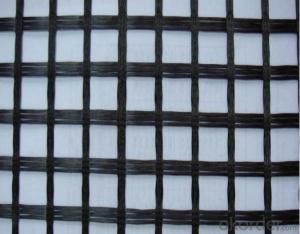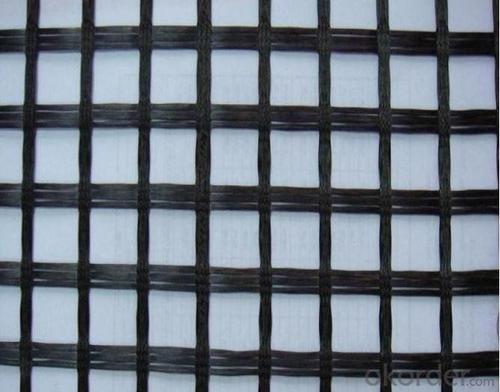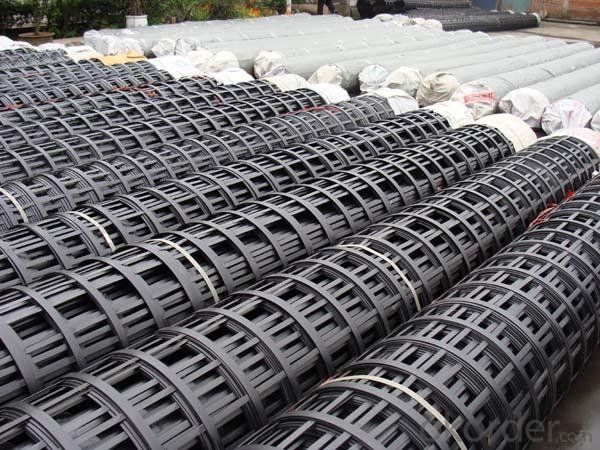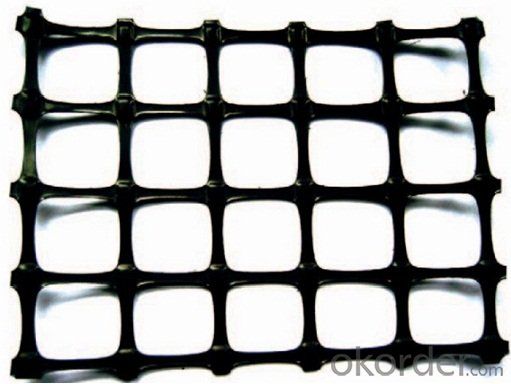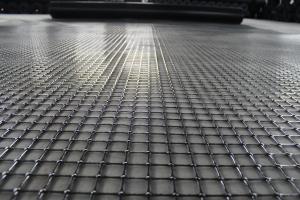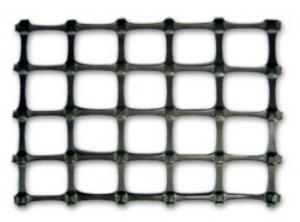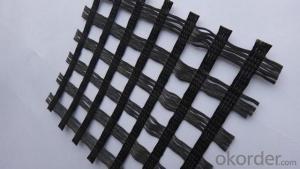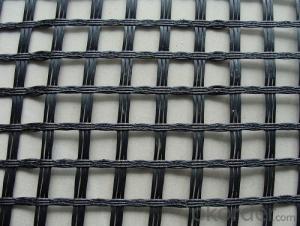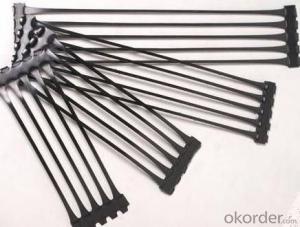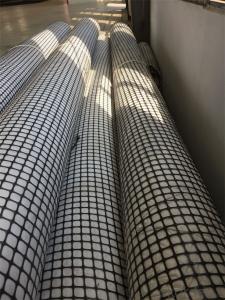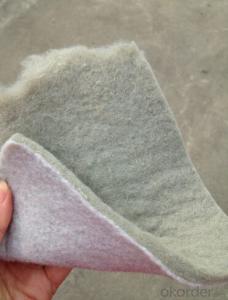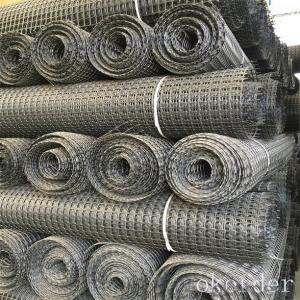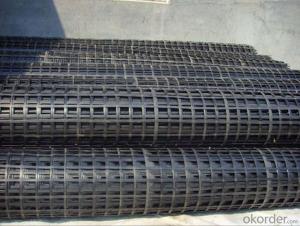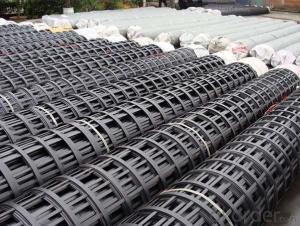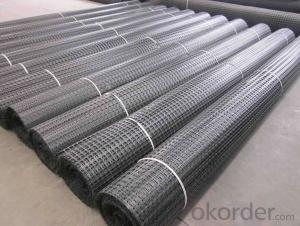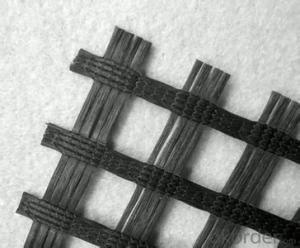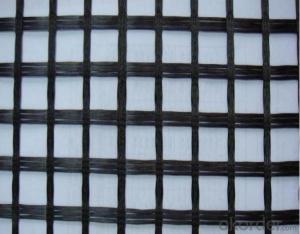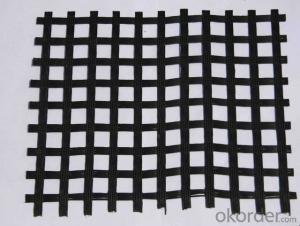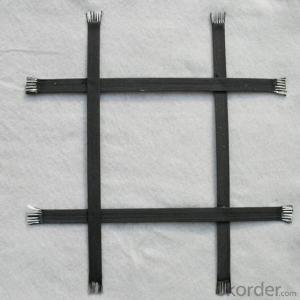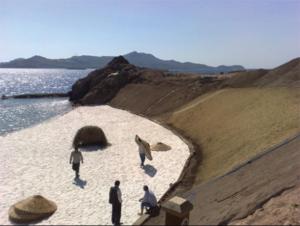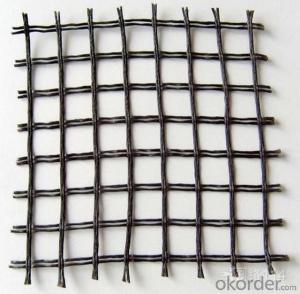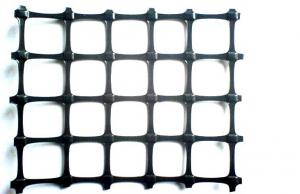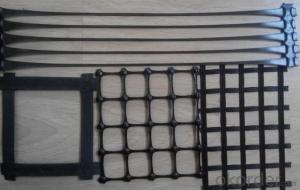High Strength PVC Coated Fiberglass Geogrids in India
- Loading Port:
- China main port
- Payment Terms:
- TT OR LC
- Min Order Qty:
- 5000 m²
- Supply Capability:
- 1000000 m²/month
OKorder Service Pledge
OKorder Financial Service
You Might Also Like
Introduction of Fiberglass Geogrid:
Fiberglass geogrid is based on fiberglass woven cloth coated with modified bitumen or PVC, it was developed to address the problem of pavement cracking on highways, roads and runways, driven by a need to reduce cost for infrastructure maintenance and repair.
It is characterized by high tensile strength in axial and lateral directions, low stretch rate, alkali-resistance, low temperature- resistance, as well as convenience in construction and low price. It can be used on pitch pavement to prevent cracks and prolong pavement service life. It also can be used as a basal reinforcement material for hillsides, reservoirs, harbors, ports, water channels, seawalls, etc.
Performance of Fiberglass Geogrid:
--- High strength, high modulus and low temperatures resistance.
Applications of Fiberglass Geogrid:
--- Reinforcement for road pavement
--- Reinforcement for railway basement
--- Reinforcement for Tunnel
--- Reinforcement for Slope
--- Reinforcement for embankment.
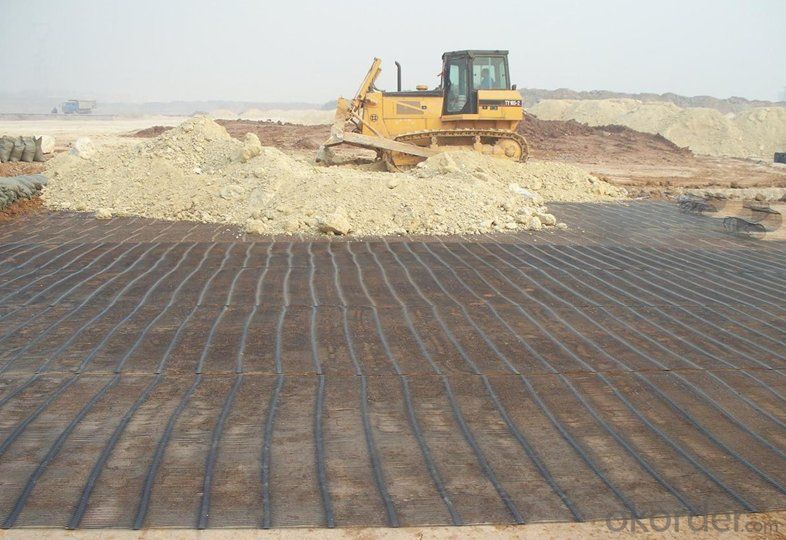
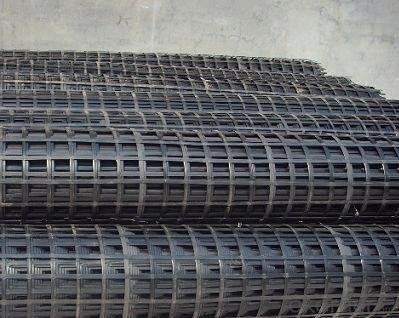
Features:
1.Intensity of vertically and horizontally from 20 KN/M to 150 KN/M
2.Low breaking elongation, not bigger than 3%
3.Suitable for each kind of soil environment
4.For treatment on surface, the rib suppresses the rough pattern, strengthens the grill surface the rough degree, enhances the GSZ steel plastic complex geogrid in the soil body friction factor.
5.It has more superior breadth, up to 2- 6 m, reducing construction joining, enhances the work efficiency.
7.Easy and convenient to install, short period and low cost- saving. It can save project cost by 10%- 50%.
FAQ:
Q: Can you accept small trial order?
A: Yes, we accept small trial orders at reasonable charge.
Q:May I get one sample for checking out the quality? How much?
A: Yes, we supply sample free of charge, and the freight will be on buyer’s account, which is refundable when order confirmed.
Q: What is your MOQ?
A: Normally, 1000 m2 per order.
Q: What is your delivery time? Can we have it sooner?
A: 2 days for sample, 3-5 days against 1x40HQ
Q: What is your payment terms?
A: T/T, Paypal (3% surcharge), Western Union or 30% deposit 70% L/C.
- Q: Can geogrids be used in reinforced concrete pavements?
- Yes, geogrids can be used in reinforced concrete pavements. Geogrids are commonly used as a reinforcement material in concrete pavements to enhance their strength, durability, and load-bearing capacity. By distributing and restraining the forces within the concrete, geogrids help to minimize cracking and improve overall pavement performance.
- Q: How are geogrids connected to the surrounding soil?
- Geogrids are connected to the surrounding soil through a process called interlocking. The geogrids have open spaces or apertures that allow soil particles to fill in, creating a bond between the geogrid and the soil. This connection helps improve the stability and load-bearing capacity of the soil, making it more resistant to erosion and preventing the geogrid from slipping or moving out of position.
- Q: Bi directional plastic geogrid is suitable for engineering
- Wharf cargo yard and other permanent bearing foundation reinforcement.Supply geogrid.
- Q: Geogrid standard geogrid price geogrid role
- plastic geogridThe plastic geogrid is a kind of polymer material with square or rectangular shape which is formed by stretching, and it can be used as two kinds of uniaxial tension and biaxial tension. The utility model is punched on the extruded polymer plate (raw material is polypropylene or high-density polyethylene), and then directionally stretched under the heating condition. The unidirectional stretching grid is only drawn along the length direction of the plate, and the bidirectional stretching grid is made by stretching the unidirectional stretching grid in the direction perpendicular to the length. As the polymer in the manufacture of plastic polymer in the process of heating with the extension of the process of re orientation, strengthen the link between the molecular chain force, to achieve the purpose of improving its strength. Its elongation rate is only 10% ~ ~ of the original plate of 15%. If the carbon black and other anti-aging materials are added in the geogrid, the utility model has the advantages of good acid resistance, alkali resistance, corrosion resistance, aging resistance and the like. The bidirectional geogrid two-way geogrid is made of high molecular polymer through extrusion, plate forming, punching process and then longitudinal and transverse stretching. The material has great tensile strength in both longitudinal and transverse directions, the chain system of this structure in the soil can also provide a more effective force to bear and spread of the ideal, to adapt to the foundation of unidirectional geogrids uniaxial geogrid in the large area of a permanent load is a polymer by extrusion pressure a thin plate and punching network rules, and then the longitudinal stretch. This process make the linear polymer into a state of orientation and form long oval mesh structure integrity and uniform distribution of nodes with high intensity. The structure has very high tensile strength and tensile modulus,.
- Q: Evaluation criteria and technical disclosure of geogrid.. Know how to share. Thank you
- 2) according to the design of the location, along the road to the laying of the grid, laying the grille, should pay attention to the connection between the grid and straightening smooth. Grille of the longitudinal and transverse joints can use nylon or polyester rope sewn or U nail connection method between the grid as a whole, grid overlapping width not less than 20cm, in the direction of the stress intensity of the joint shall not be less than the design tensile strength of materials. The grid distortion, fold, overlap, is not conducive to play its role, thus laying by hands straightened, the grid is smooth and uniform, geogrid every 1.5-2.0m paved with hook nail fixed on the ground.
- Q: Are geogrids suitable for use in bridge approaches?
- Yes, geogrids are suitable for use in bridge approaches. Geogrids are commonly used in civil engineering and construction projects to reinforce soil and provide stability. In bridge approaches, where the ground needs to bear heavy loads and prevent settlement, geogrids can effectively distribute the load and reduce the potential for soil erosion. They enhance the overall strength and durability of the bridge approach, making geogrids a suitable choice for this application.
- Q: Are geogrids effective in stabilizing coastal dunes?
- Yes, geogrids are effective in stabilizing coastal dunes. Geogrids are synthetic materials that are designed to reinforce and stabilize the soil. They can be installed in coastal dunes to help prevent erosion and maintain the stability of the dune system. The geogrids provide additional strength and support to the sand, reducing the risk of dune collapse and erosion caused by wind and water.
- Q: Can geogrids be used in retaining walls for waterfront parks?
- Yes, geogrids can be used in retaining walls for waterfront parks. Geogrids are commonly used in retaining wall construction as they provide reinforcement and stability to the soil. In the case of waterfront parks, where the retaining walls are exposed to water and potential erosion, geogrids can help prevent soil movement, maintain the integrity of the wall, and enhance its overall durability.
- Q: What are the factors that affect the installation and survivability of geogrids in cold climates?
- There are several factors that can influence the installation and survivability of geogrids in cold climates. Firstly, the freezing and thawing cycles in cold climates can result in ground movement, which may impact the stability and performance of geogrids. Additionally, the presence of frost heave can cause uplift forces on the geogrids, potentially leading to damage or failure. The type and quality of the soil, as well as its moisture content, also play a crucial role in determining the effectiveness of geogrid installation in cold climates. Furthermore, the design and proper installation techniques, such as adequate anchoring and appropriate subgrade preparation, are essential for ensuring the long-term survivability of geogrids in cold climates. Overall, understanding and addressing these factors are vital to ensure the successful implementation of geogrids in cold climate regions.
- Q: How do geogrids improve the performance of geosynthetic clay liners?
- Geogrids improve the performance of geosynthetic clay liners by providing added stability and reinforcement. They distribute loads more evenly, reducing the risk of liner deformation and maintaining its integrity. Geogrids also enhance the liner's tensile strength, preventing cracks and enhancing its resistance to shear forces. Overall, geogrids enhance the durability and performance of geosynthetic clay liners, increasing their effectiveness in various civil engineering applications.
Send your message to us
High Strength PVC Coated Fiberglass Geogrids in India
- Loading Port:
- China main port
- Payment Terms:
- TT OR LC
- Min Order Qty:
- 5000 m²
- Supply Capability:
- 1000000 m²/month
OKorder Service Pledge
OKorder Financial Service
Similar products
Hot products
Hot Searches
Related keywords
